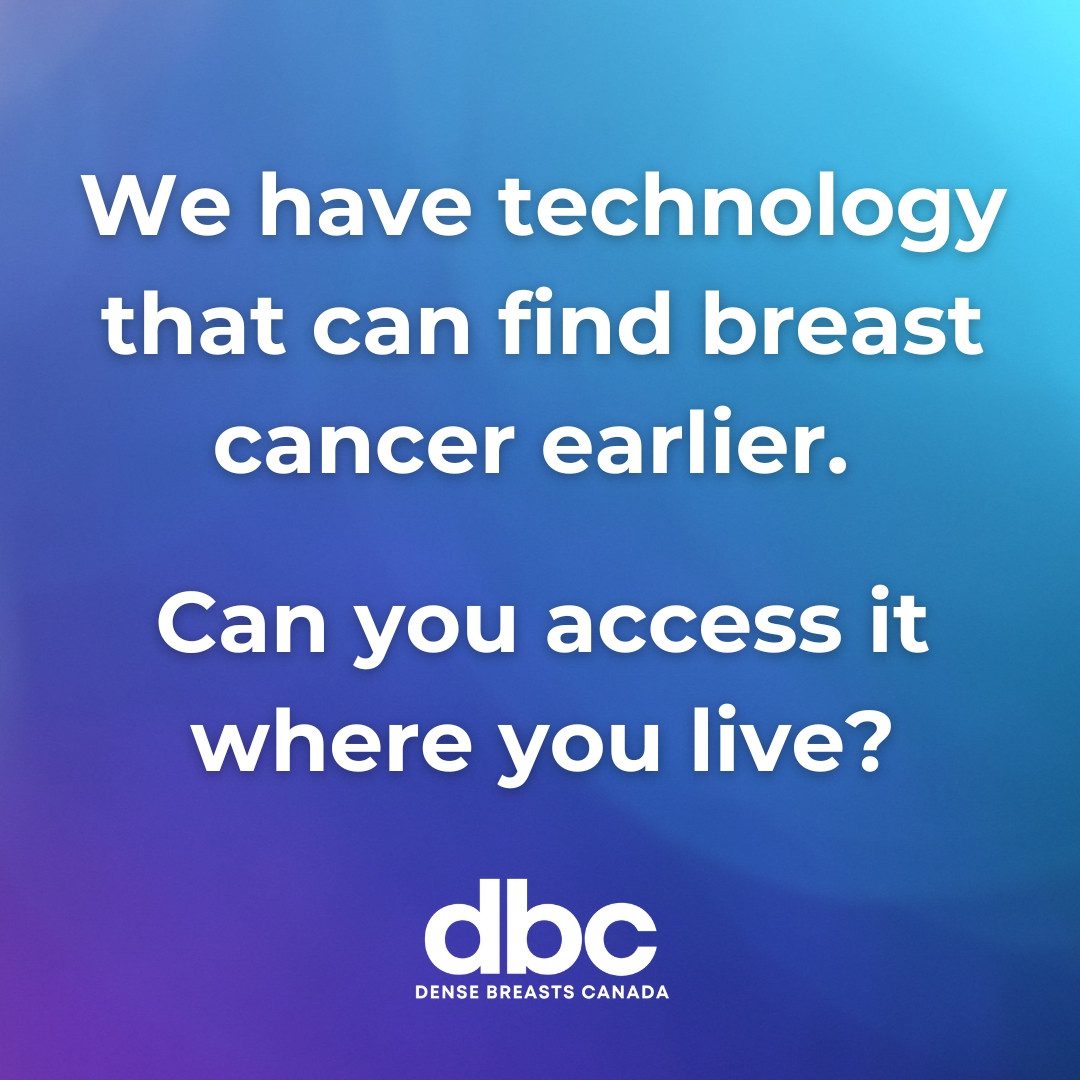Technology for Dense Breasts

Cancer can be harder to detect in dense breasts using traditional mammography, but advanced imaging technologies can help. The challenge? Access. By advocating for these tools, we can improve early detection and save lives. Here’s a look at available technology options in Canada and how they can make a difference for women with dense breasts.
3D MAMMOGRAPHY
How it works:
Creates thin slices of breast images to reduce tissue overlap that can hide tumors. The patient is positioned exactly the same way as for a standard mammography but is in compression for several seconds longer.
Pros:
Whereas, 2D mammography finds ~5 cancers per 1000 women, 3D mammo detects 1-2 more cancers per 1,000 women. It also reduces recall rates.
Cons:
Less effective for dense breasts compared to ultrasound; slightly higher radiation.
Access:
Limited to diagnostic use in most provinces; some clinics using it for initial screening for women in their 40s. Alberta leads in using it for screening women of all ages.
What we need:
Make 3D mammography a standard screening tool for all women, just like it is in many clinics in the U.S.
ULTRASOUND
How it works:
Uses sound waves to create breast images, with handheld or automated 3D options. 3D is only used for screening in Alberta.
Pros:
Finds 2-7 additional cancers per 1,000 women with dense breasts when combined with mammography. Safe, quick, and radiation-free.
Cons:
Its sensitivity may lead to more call-backs for further testing.
Access: Available for screening women with dense breasts in BC, Ontario, Alberta, and NWT. In other provinces, availability is limited. Private clinics in Toronto and Montreal.
What we need:
Universal access to screening ultrasound for all women with dense breasts. Advocate with your healthcare provider and local representatives. See the patient-doctor conversation tips on our website.
MRI
How it works:
Uses magnetic fields and radio waves to create detailed images.
Pros:
Highly effective in dense breasts, detecting up to 18 additional cancers per 1,000 women missed by mammography. No radiation involved.
Cons:
Sensitive, with a higher chance of false positives. Requires contrast injection (Gadolinium).
Access:
In Ontario, women with Category D density can request MRI every 2 years, depending on capacity. Used for high-risk women (e.g., BRCA gene carriers, those with over 25% risk on the IBIS calculator). Do you know if you are high risk? Check out our video on how to calculate your IBIS risk score https://www.youtube.com/watch?v=to2x_C7D458 Private options exist in some provinces.
What we need:
Expand MRI availability. The European Society of Breast Imaging recommends it every 2-4 years for women with Category D.
Contrast-Enhanced Mammography (CEM)
How it works:
Combines traditional mammography with an iodine-based contrast agent.
Pros:
Comparable to MRI in detecting 12-16 additional cancers, with lower cost and higher capacity.
Cons: Not suitable for women with kidney issues or contrast allergies. Slightly higher radiation than standard mammograms.
Access:
Used for diagnostics but not screening yet. Used for women with dense breasts and cancer. Availability varies across facilities in Canada.
What we need:
Advocate for CEM as a screening tool for women with dense breasts.
The Future of Breast Cancer Detection
Emerging technologies like AI, blood tests, saliva tests, and low-dose molecular imaging hold promise, but today we must focus on making existing tools accessible. Women with dense breasts deserve better screening options.
Use your voice:
Contact your MPP or MLA and demand change. Together, we can ensure every woman has the screening test she needs to protect her health.
